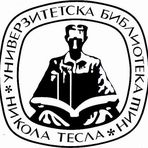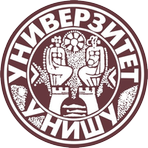Title
Uloga žena u ratovima srpske vojske od 1912. do 1918. godine
Creator
Žikić, Milena 1985-
Copyright date
2018
Object Links
Select license
Autorstvo-Nekomercijalno-Bez prerade 3.0 Srbija (CC BY-NC-ND 3.0)
License description
Dozvoljavate samo preuzimanje i distribuciju dela, ako/dok se pravilno naznačava ime autora, bez ikakvih promena dela i bez prava komercijalnog korišćenja dela. Ova licenca je najstroža CC licenca. Osnovni opis Licence: http://creativecommons.org/licenses/by-nc-nd/3.0/rs/deed.sr_LATN. Sadržaj ugovora u celini: http://creativecommons.org/licenses/by-nc-nd/3.0/rs/legalcode.sr-Latn
Language
Serbian
Cobiss-ID
Theses Type
Doktorska disertacija
description
Datum odbrane: 13.02.2019.
Other responsibilities
mentor
Mladenović, Božica 1963-
predsednik komisije
Stolić, Ana
član komisije
Milanović, Jasmina
Academic Expertise
Društveno-humanističke nauke
University
Univerzitet u Nišu
Faculty
Filozofski fakultet
Group
Departman za istoriju
Alternative title
The role of women in the wars of the serbian army from 1912 to 1918
Publisher
[М. Ž. Žikić]
Format
177 listova
description
Bibliografija: listovi 154-164;
Prilozi: listovi 166-177.
description
The History of the Serbs from 1878 to 1918
Abstract (en)
The doctoral dissertation The Role of Women in the Wars of the Serbian Army from 1912 to 1918, in five chapters: A woman in the role of a fighter, A woman leading transport units, A woman in medical missions, A woman in social-humanitarian organizations, A woman and propaganda, deals with women’s contribution to the Serbian state and army in war circumstances of the Balkan Wars and the First World War. It relies on the relevant historical sources and a few narrative historical sources. The aim of research is to show the involvement of women during the war, as members of motorized infantry units, humanitarian organizations, medical missions, in the role of a fighter and war propaganda. In the research and theme elaboration, we used the heuristic approach, finding information within historical sources. In the wars from 1912 to 1918, a small number of women were involved at the front in the role of a fighter. The military career of Milunka Savić remained crowned with seven medals while Sofija Jovanović had ten. The First World War fostered the creation of the first female officer in the Serbian army, a British woman, Flora Sandes. In the battles at the front in Dobrudza and Thessaloniki, women were transporting the wounded in medical cars, conducted the evacuation and organization of the transport. The largest presence of women was in medical missions. Their role was not only to provide medical help but they also scrubbed and disinfected the hospitals. The largest number of women volunteered as nurses. In women’s clubs, they made the medical supplies and clothes for the wounded and soldiers and they worked on charitable fundraising for hospitals and prisoners. A woman, by means of propaganda, represented a Serbian soldier, delivered speeches about the occupied country; thus collecting aid for her people. Women in the wars from 1912 to 1918 made a huge contribution to the Serbian army, as fighters, humanitarian workers, doctors, nurses, correspondents and drivers of medical cars. Under newly arisen circumstances, a unique emancipation and gender equality took place. With their participation, women carried a heavy burden for the survival of the Serbian society in the hardest moments.
Authors Key words
Prvi svetski rat, Balkanski ratovi, Milunka Savić, Sofija Jovanović, Flora Sends, transportne jedinice, društveno-humanitarne organizacije, propaganda, lekarke, bolničarke
Authors Key words
The First World War, the Balkan Wars, Milunka Savić, Sofija Jovanović, Flora Sandes, transport units, social humanitarian organizations, propaganda, doctors, nurses
Classification
94(497.11)"1912/1918"(043.3)
Subject
94(497.11)"1912/1918":929-055.2(043.3)
Subject
H240, H250
Type
Tekst
Abstract (en)
The doctoral dissertation The Role of Women in the Wars of the Serbian Army from 1912 to 1918, in five chapters: A woman in the role of a fighter, A woman leading transport units, A woman in medical missions, A woman in social-humanitarian organizations, A woman and propaganda, deals with women’s contribution to the Serbian state and army in war circumstances of the Balkan Wars and the First World War. It relies on the relevant historical sources and a few narrative historical sources. The aim of research is to show the involvement of women during the war, as members of motorized infantry units, humanitarian organizations, medical missions, in the role of a fighter and war propaganda. In the research and theme elaboration, we used the heuristic approach, finding information within historical sources. In the wars from 1912 to 1918, a small number of women were involved at the front in the role of a fighter. The military career of Milunka Savić remained crowned with seven medals while Sofija Jovanović had ten. The First World War fostered the creation of the first female officer in the Serbian army, a British woman, Flora Sandes. In the battles at the front in Dobrudza and Thessaloniki, women were transporting the wounded in medical cars, conducted the evacuation and organization of the transport. The largest presence of women was in medical missions. Their role was not only to provide medical help but they also scrubbed and disinfected the hospitals. The largest number of women volunteered as nurses. In women’s clubs, they made the medical supplies and clothes for the wounded and soldiers and they worked on charitable fundraising for hospitals and prisoners. A woman, by means of propaganda, represented a Serbian soldier, delivered speeches about the occupied country; thus collecting aid for her people. Women in the wars from 1912 to 1918 made a huge contribution to the Serbian army, as fighters, humanitarian workers, doctors, nurses, correspondents and drivers of medical cars. Under newly arisen circumstances, a unique emancipation and gender equality took place. With their participation, women carried a heavy burden for the survival of the Serbian society in the hardest moments.
“Data exchange” service offers individual users metadata transfer in several different formats. Citation formats are offered for transfers in texts as for the transfer into internet pages. Citation formats include permanent links that guarantee access to cited sources. For use are commonly structured metadata schemes : Dublin Core xml and ETUB-MS xml, local adaptation of international ETD-MS scheme intended for use in academic documents.


